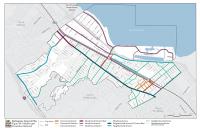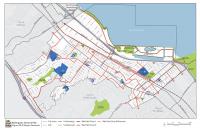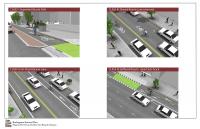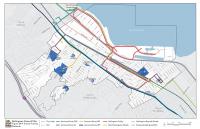Transit Access and Amenities
In Burlingame, local Caltrain service and SamTrans bus routes link destinations up and down the Peninsula, providing Burlingame residents with viable alternatives to car use. These transit modes also bring people into Burlingame to work and shop. Certainly, the frequency and reliability of transit service are the two most critical factors that affect a person’s decision to take the train or bus, but providing safe and easy access to transit for all potential users can encourage a casual or timid rider to take trips more frequently. Having this access establishes confidence in commuters who may want to take advantage of transit but are unsure how they would get themselves to a transit stop or station. By extending a seamless and safe multimodal environment outward from transit stops along existing streets, across barriers, and into nearby destinations or residential areas, the number of residents and employees using transit can be expanded proportionally. The community benefits of well-designed, accessible transit stations can extend more than one mile from a station or stop.
These connections also have significant health and economic benefits. By providing residents with better biking and walking infrastructure around transit stops and stations, the City is also encouraging more active lifestyles among its residents. Additionally, by making these areas more walkable and bikeable, the areas become more desirable places to live and work.
Figure M-4 identifies the citywide transit priority network, and the following goal and policies promote ways to expand and enhance transit services in Burlingame.
Goal: M-4
Improve transit access, frequency, connectivity, and amenities to increase transit ridership and convenience.
Review, comment, and participate in regional discussions related to California High Speed Rail on the Peninsula. Work with the California High Speed Rail Authority to consider plans for high speed rail development and access to high speed rail hubs if these improvements do not result in locally unacceptable safety, environmental, traffic, visual, or noise impacts on the community.



